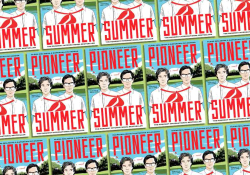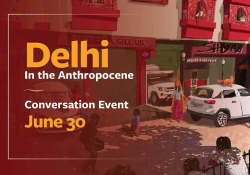Creating the Animated Trailer for Mo Yan’s Sandalwood Death
The creation of the animated book trailer for Mo Yan’s Sandalwood Death was a labor of love carried out over nearly two years. I conceived of the idea within months of learning that the novel would be coming out in the Chinese Literature Today Book Series with the University of Oklahoma Press. I had only recently finished the staging of the opera Yingelishi (for which I wrote the libretto) in 2010 in collaboration with the College of Art and Design at Yunnan University. I was eager to start another project, so I spoke with Li Sen, the dean of the college, and we began work immediately.
I created the first storyboard over the course of a week that first summer, with another quickly following that with help from art-school student Jing Jing and others. The boards served as a general script, but the team made any changes they wanted. The trailer’s basic narrative begins with historical context of the Boxer Rebellion, then slowly flashes scenes from the novel, building toward the novel’s climatic conflicts.
Over the past two summers, I have met with Li Sen’s team to sort through images as they continued to press on.
Of course, it helped that the contributing faculty were all fans of this novel, as am I, so I suppose it was not so dissimilar from a fan trailer one might find elsewhere on YouTube except for the professionalism of those who worked on it. But our goal went beyond displaying our appreciation for the novel—I hoped that if we could translate the signature style of Mo Yan into a compelling animated video, it would bring the heart of Sandalwood Death forward into the gaze of a wider audience and give viewers an opportunity to quickly connect with the elements of the story, just as they would in watching a trailer for a movie. The medium of animation allowed us to portray the novel’s fast-paced, violent, and sensuous nature in a variation on the genre of motion comics (or visual novels) that was first imagined by pioneering science fiction author Phillip K. Dick in the 1960s and is now a growing genre within comic book arts. We hope viewers will be tempted enough by this glimpse of the novel’s style, tone, texture, and scope to seek out and enjoy Howard Goldblatt’s masterful translation of Mo Yan’s novel.
The team of animators and artists who worked on this trailer have won numerous national awards in China. All of them donated their time due to their admiration of the novel or general hope to promote a wider readership for Chinese literature in translation. I am thrilled with the trailer and am very thankful for all the work everyone put into it, including some last-minute graphics from Tony Roberts, OU Press’s graphic designer, and edits from Julie Shilling.
The score for the trailer is by Henry Wan Man Lai, a well-known and respected Hong Kong–based film composer, who generously allowed us to use this powerful track. He has donated his proceeds from the trailer to the Hong Kong Children’s Cancer Foundation.
I hope this small collaborative effort helps bring more readers to Mo Yan’s work, and specifically to Sandalwood Death. With all of the controversies swirling around Mo Yan at the moment, I think it is important to acknowledge the uphill battle that all translated works face in reaching English-language readers, and I hope that we can continue to push toward new ways of expanding the audience for translated Chinese literature in the future. I think Mo Yan can serve as an important gateway to discovering many other Chinese authors. If you pick up the book, you will not be disappointed—but do note, it is not for the faint of heart!
Support for the creation of the Sandalwood Death trailer has been provided by the University of Oklahoma’s College of Arts & Sciences.





















